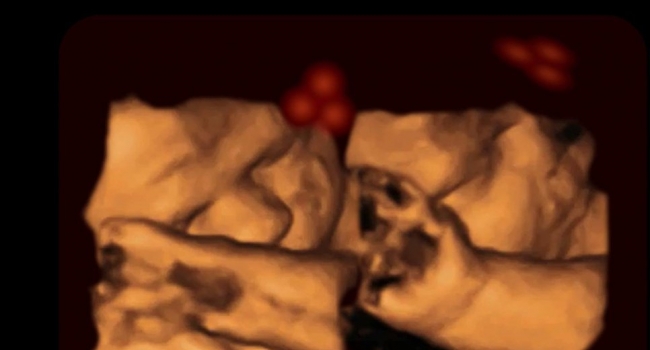- Latest news▼
-
18:00, April 18 Daily Mail: Elderly woman in China gets infected with brain-eating amoeba

-
14:19, April 18 Obesity: exercising before breakfast helps you lose weight faster

-
10:42, April 18 The Conversation: childhood trauma can cause pathological hoarding

-
08:37, April 18 Daily Mail: Satiating food reduces cravings for sweets, nutritionist says

-
18:22, April 17 First Armenian-German Conference entitled “Heart Failure Spring School”

-
08:38, April 17 Why do kids usually recover from COVID-19 more easily than adults?

-
14:37, April 16 Daily Mail: intermittent fasting is not suitable for children and women before their periods

-
16:41, April 15 Cell: in carriers of defective BRCA2 gene, sugar consumption increases cancer risk

-
15:04, April 15 305 cases of measles recorded in Armenia so far in 2024

-
14:38, April 15 Food and Environmental Virology: tea contributes to effective coronavirus control

-
12:41, April 15 Daily Mail: vitamin A, B3 and E supplements can be dangerous

-
10:56, April 15 Diabetes Care: evening physical activity is good for the heart

-
08:27, April 15 Women are more susceptible to blood loss and death during bypass surgery than men, researchers say

-
18:42, April 13 WHO: Nigeria pioneers revolutionary meningitis vaccine

-
16:43, April 13 One-third of women experience menstruation-related migraines, most often during premenopause - study

All materials
Fetuses turn to follow face-like shapes while in the womb

Babies look for faces as soon as they are born, and now it seems they can do this while still a fetus inside the uterus.
“We already know that fetuses can see,” says Vincent Reid of Lancaster University, UK. “But until now, no one has displayed visual information to the fetus and triggered a response.”
Reid’s team has done it by shining three red dots through the skin of women in the final trimester of their pregnancies. When the dots were configured to look something like two eyes above a mouth, the team captured 40 occasions where a fetus seemed to track this pattern when it moved.
To watch how the fetus’s head moved, Reid’s team used high-definition ultrasound. The team shone the red lights in a pattern to one side of the fetus’s head, and moved them slowly, to see if the fetus turned to track it. “We were focusing on peripheral vision,” says Reid.
The group used red light because it is the best at getting through to the uterus. As a control, the team inverted the three dots – one dot sitting above two dots, instead of two dots sitting above one. This experiment replicates those conducted in the 1990s that identified what newborn babies preferentially look at, says Reid.
The team tested both patterns on 39 healthy fetuses during the final third of pregnancy, five times each. Out of 195 tests of each configuration, fetuses turned to follow the “face” shape 40 times, and the inverted image only 14 times. “It’s definitely a robust finding. What matters is the difference between the conditions,” says Reid.
“We know that fetuses receive a lot of sensory stimulation from the outside world,” says Marco Del Giudice at the University of New Mexico, Albuquerque. In 2011, Del Guidice’s team showed that on a bright summer’s day, with no clothing in the way, a fetus receives the same amount of light you get in a typically lit house.
“This brilliant new study demonstrates how we can use these windows to learn how the remarkable skills of human infants begin to develop before birth,” says Del Guiiece. “I’ve suggested, for example, that fetuses might develop some visual and coordination skills by observing the movements of their own hands and feet.”
The study doesn’t tell us much about how a fetus naturally develops, says Mark Johnson at Birkbeck College, London, whose team demonstrated in 1991 that newborns preferentially turn to look at faces. “The circumstances are very much unlike anything that would happen in the real world.”
“But it’s interesting that these predispositions might be there from earlier on to prepare the infant for birth,” Johnson says.
Follow NEWS.am Medicine on Facebook and Twitter
- Video
- Event calendar
- Archive
- Most read
month
week
day
- Pediatrics: Hypoglossal nerve stimulation implant helps with sleep apnea 1357
- Health minister: Simulation educational center will be created, assisted reproductive technology capacity will increase in Armenia 1313
- WHO: Nigeria pioneers revolutionary meningitis vaccine 1165
- One-third of women experience menstruation-related migraines, most often during premenopause - study 1133
- Women are more susceptible to blood loss and death during bypass surgery than men, researchers say 923
- Daily Mail: vitamin A, B3 and E supplements can be dangerous 901
- Food and Environmental Virology: tea contributes to effective coronavirus control 901
- Cell: in carriers of defective BRCA2 gene, sugar consumption increases cancer risk 871
- 305 cases of measles recorded in Armenia so far in 2024 865
- Diabetes Care: evening physical activity is good for the heart 855
- Daily Mail: intermittent fasting is not suitable for children and women before their periods 679
- First Armenian-German Conference entitled “Heart Failure Spring School” 470
- Why do kids usually recover from COVID-19 more easily than adults? 333
- Obesity: exercising before breakfast helps you lose weight faster 318
- The Conversation: childhood trauma can cause pathological hoarding 313
- Find us on Facebook
- Poll





